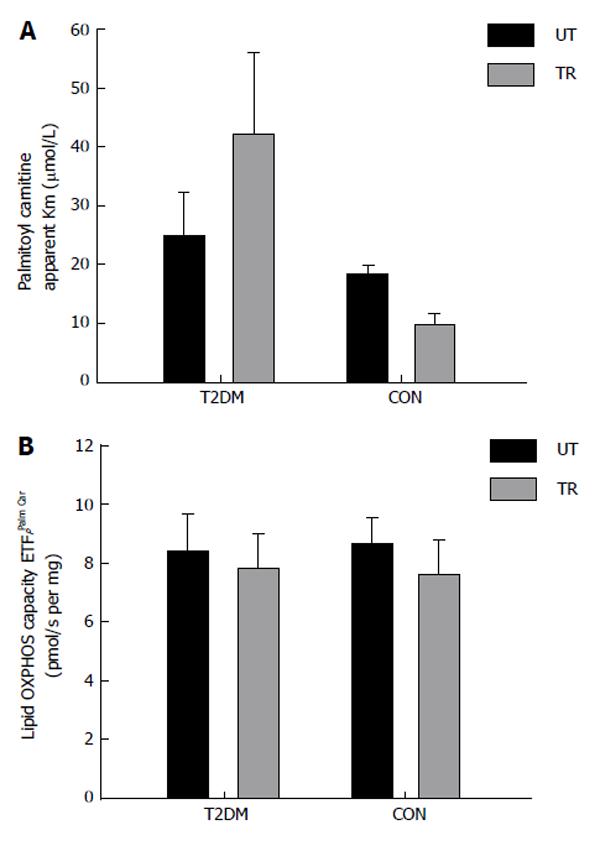Copyright
©2014 Baishideng Publishing Group Inc.
World J Diabetes. Aug 15, 2014; 5(4): 482-492
Published online Aug 15, 2014. doi: 10.4239/wjd.v5.i4.482
Published online Aug 15, 2014. doi: 10.4239/wjd.v5.i4.482
Figure 4 Patients with type 2 diabetes (n = 7) and healthy control subjects (n = 5) performed eight sessions of one-legged high intensity training in two weeks.
Each session consisted of ten one-minute exercise bouts at 60% of one-legged maximal oxygen uptake and > 80% of maximal heart rate, interspersed by one min rest. After completion of the training muscle biopsies (vastus lateralis) were obtained from the untrained (black bars) and the trained (grey bars) leg. The measurement of mitochondrial OXPHOS capacity and substrate sensitivity was performed with malate, ADP and palmitoyl carnitine (titration: 5-200 μmol/L). A: Apparent Michaelis Menten constant Km for palmitoyl carnitine; B: Maximal OXPHOS capacity with the mentioned substrates. T2DM: Type 2 diabetes; CON: Control subjects; UT: Untrained; TR: Trained.
- Citation: Larsen S, Skaaby S, Helge JW, Dela F. Effects of exercise training on mitochondrial function in patients with type 2 diabetes. World J Diabetes 2014; 5(4): 482-492
- URL: https://www.wjgnet.com/1948-9358/full/v5/i4/482.htm
- DOI: https://dx.doi.org/10.4239/wjd.v5.i4.482









